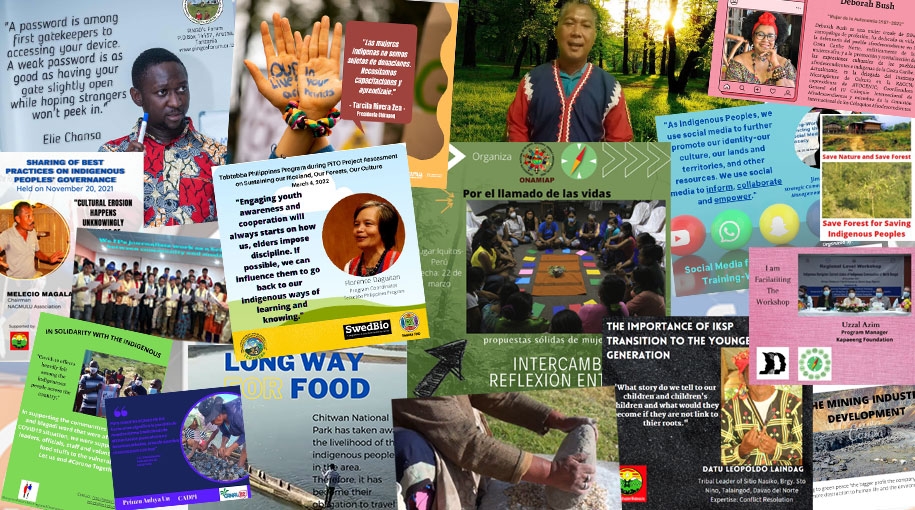“I got more insights about social media and these are very important tools to reach our communities. I am very motivated to implement the things I learned.”
Gilliamo Orban, Communications Officer of De Vereniging van Inheemse Dorpshoofden in Suriname (VIDS), expressed his thoughts during the last session of the Training-Workshop on Enhancing the Use of Social Media for Advocacy. Conducted virtually for four three-hour sessions last March 2022, the training-workshop aimed to strengthen communications and advocacy works at various levels of both ELATIA and Indigenous Navigator partners in amplifying their different self-determined and sustainable development programs and activities while pursuing better visibility of indigenous peoples in various social media platforms.
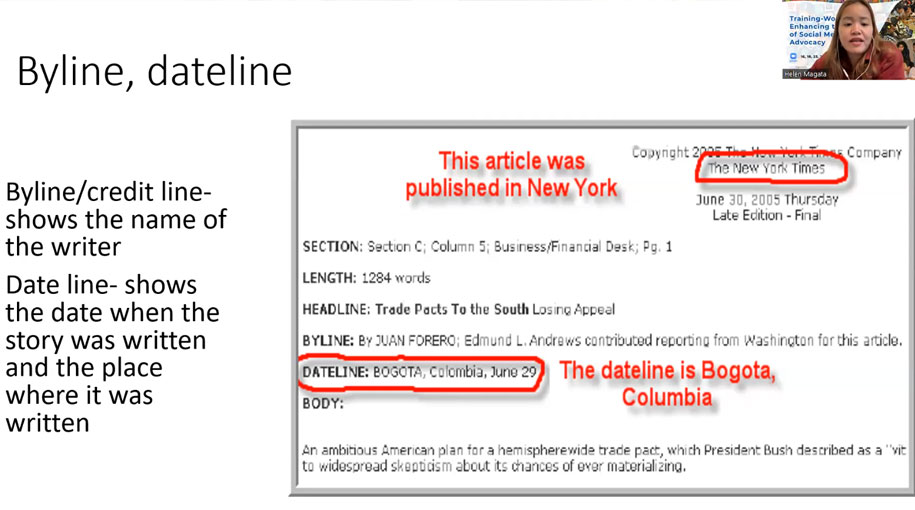
The training focused on the basic elements and principles of creating contents for social media such as news articles, picture quotes, videos, photos, as well as delivering these messages. “One of the key reasons that video performs so well on social media is because it’s an easy way to tell a story. Before you start creating content, first, you must have a plan on how you will go about your social media videos,” Paul Micheal Nera, Publication and IT staff of Tebtebba, said as he provided tips on shooting videos and taking pictures. In addition, Doris Borna Mae Esteban, Communications Staff of Tebtebba, shared about the effective delivery of advocacy-related messages and news updates via the different social media platforms.
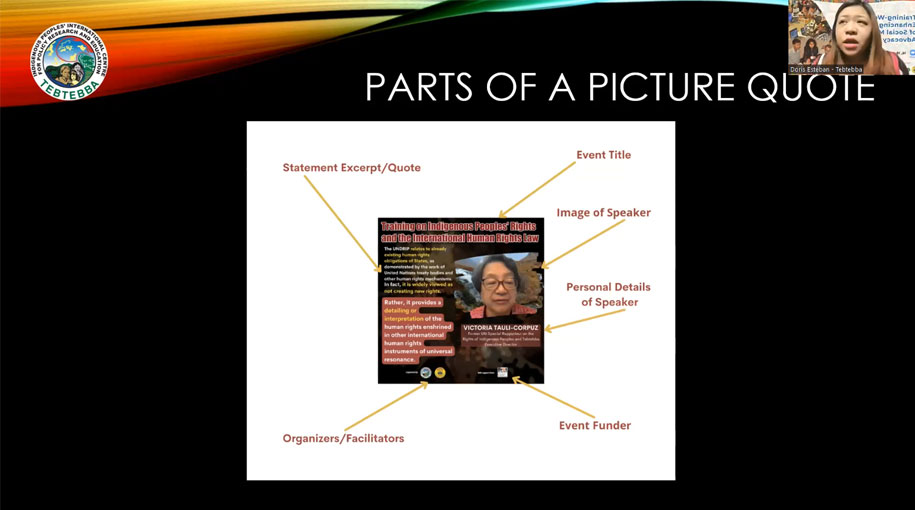
Participants had hands-on application on the elements and principles as well as the different tools of creating contents asynchronously. The participants’ outputs were reviewed and commented on by the trainers and presented on the last session for further discussion.
Ronnie Balong, Advocacy Staff and Community Development Worker of Silingang Dapit sa Sidlakang Mindanao (SILDAP) in the Philippines, said during the last session that planning is the most difficult part in creating and editing videos as he critiqued his own video output. He also advised the other participants to have more patience in creating their social media contents.
At the culmination of the training, Elie Chansa, the Information and Communications Officer of PINGO’s Forum in Tanzania, stressed that the training filled in the space of communicating for indigenous peoples to the world. “I think this training has been a great eye-opener to us, telling us that we have a part to do – we have a great burden to do for our community and for the world. We are the connectors of the communities and the world. We bridge the gap,” he said.
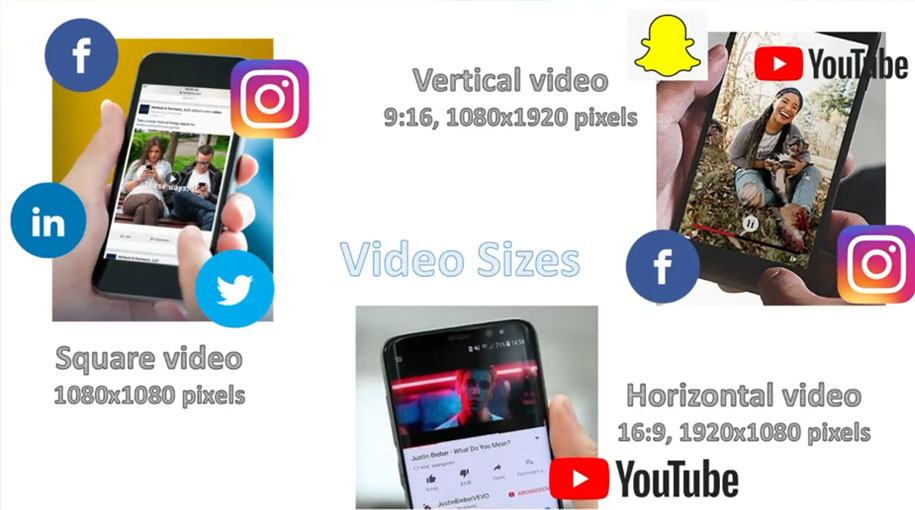
On the other hand, Luis Edpis, Community Organizer of the Indigenous Peoples Biodiversity Programme of Tebtebba, was very optimistic during the last session. He said he needed to practice more on developing social media audio-visual materials. “Someday, I hope I can also make my own video,” he said.
The training was made possible with support the from Brot fur die Welt and the Christensen Fund through the International Work Group on Indigenous Affairs (IWGIA). About 24 participants from all over the world participated in the said online event. The Strategic Communications and Knowledge Management Department staff of Tebtebba, in collaboration with the Indigenous Navigator and ELATIA Indigenous Peoples Training Institute, conducted the said training.
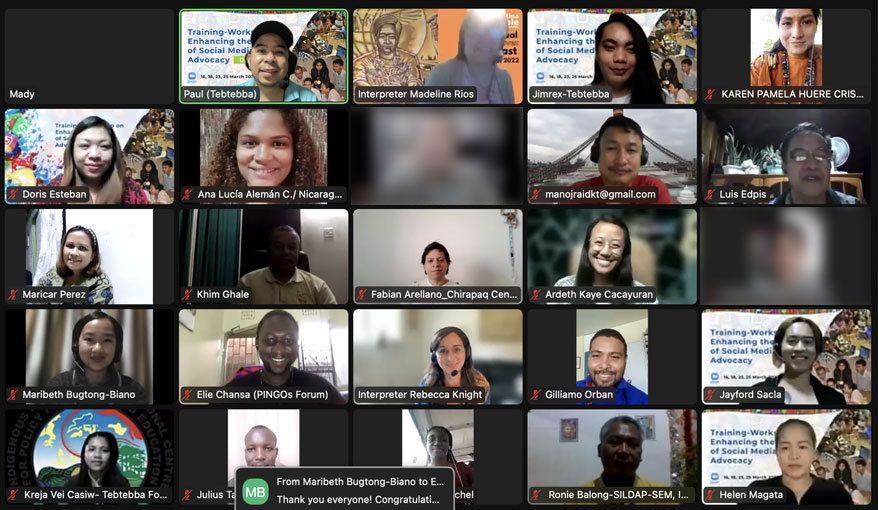
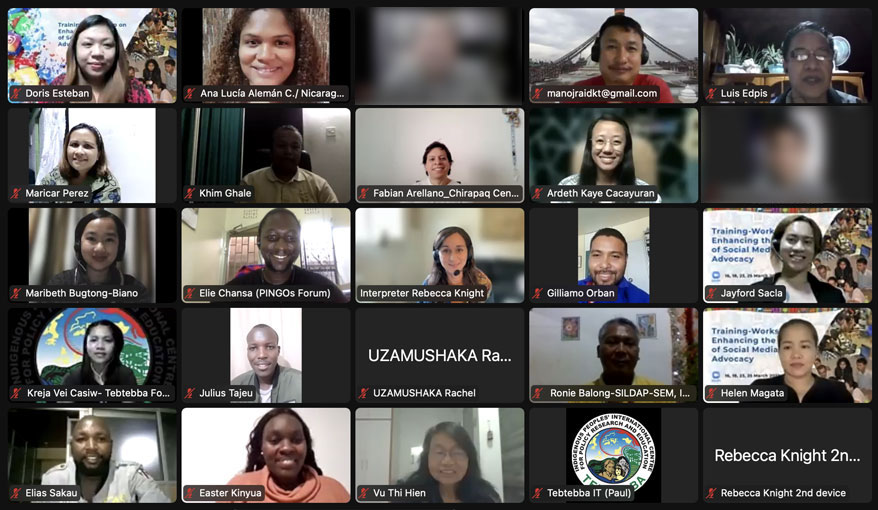
*Some participants’ faces have been blurred to maintain their privacy.


